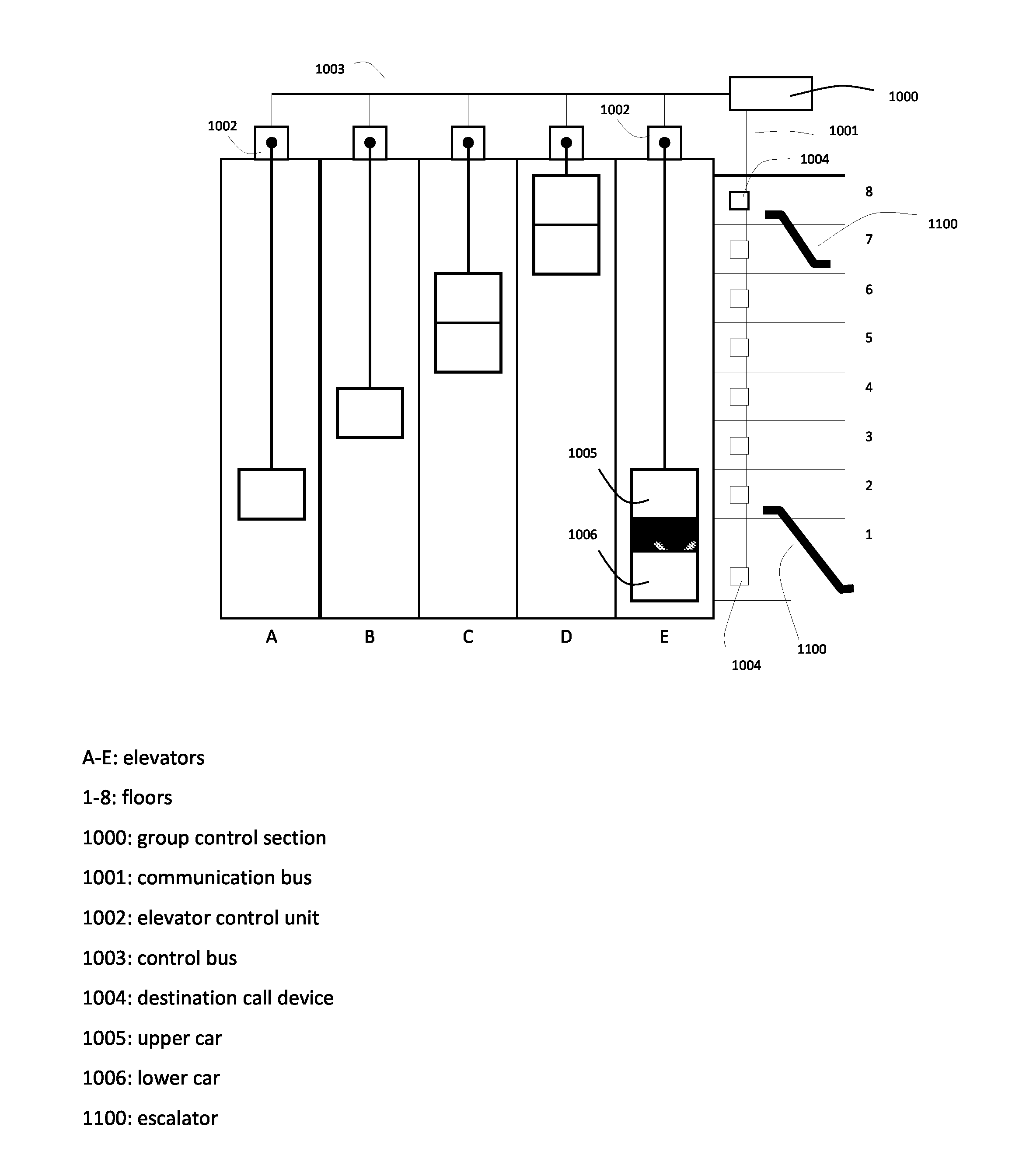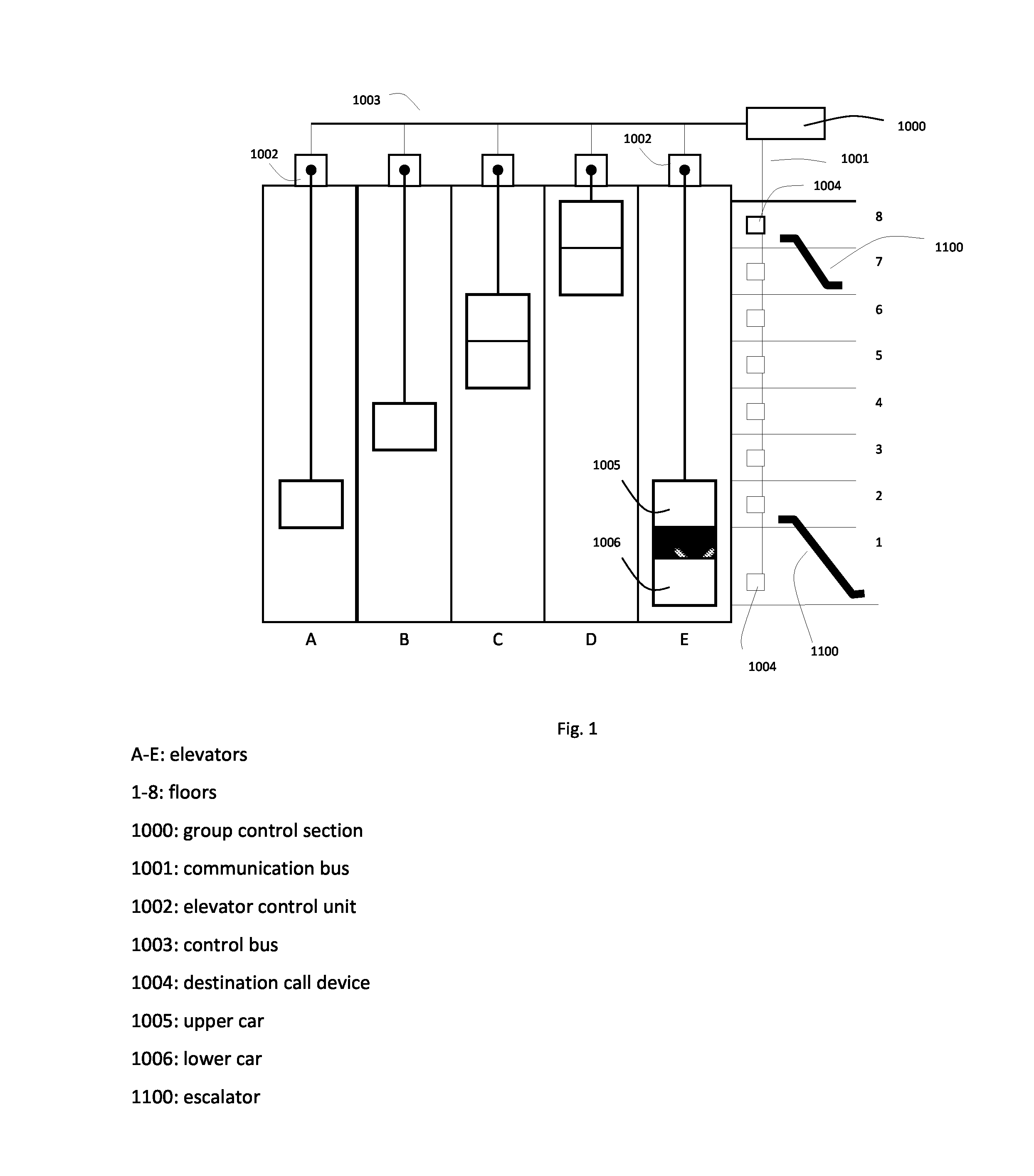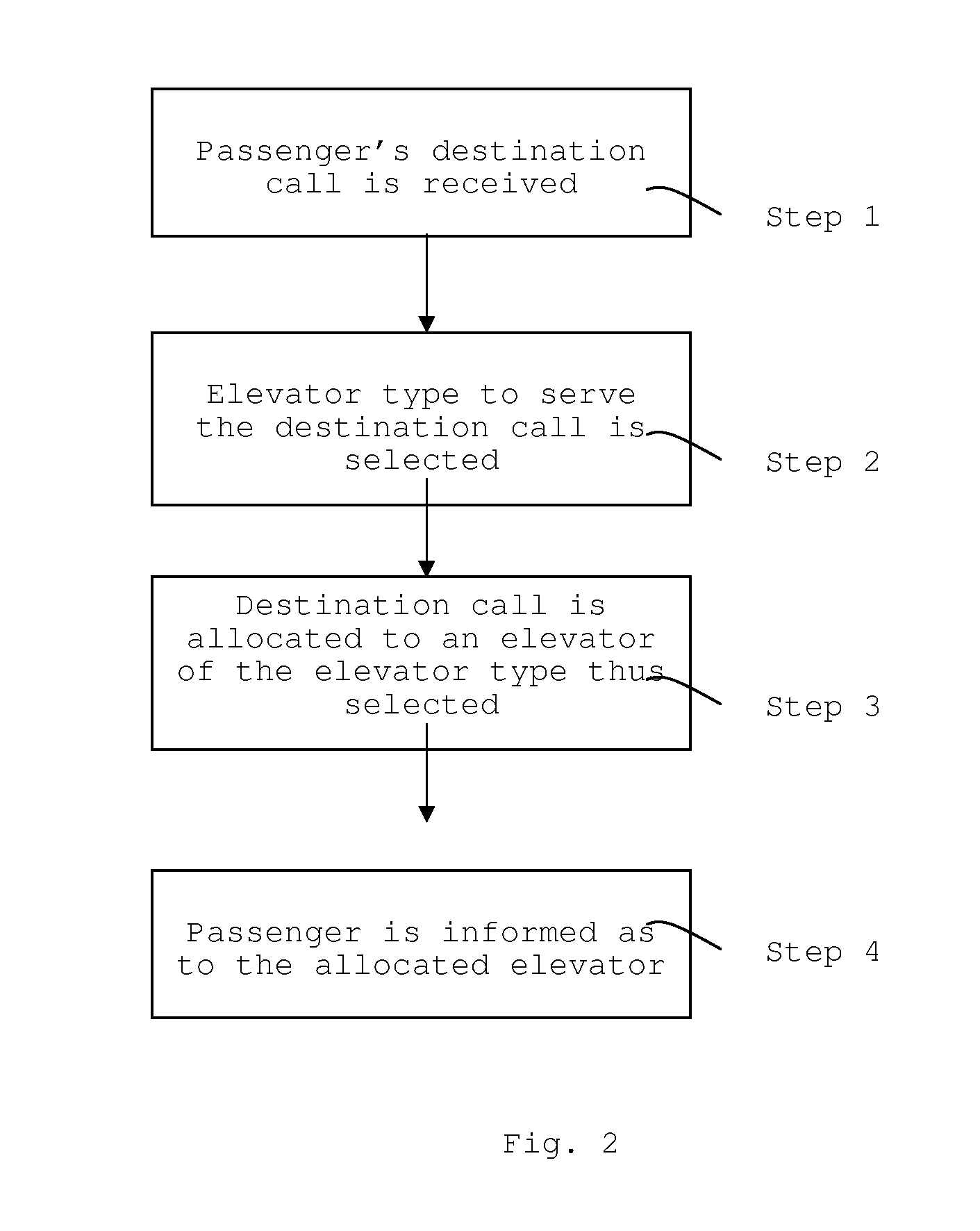Method and system for allocation of destination calls in elevator system
a technology of elevator system and destination call, applied in the direction of elevator, transportation and packaging, etc., can solve the problems of underutilization of elevator system capacity, inability to meet the above-described call entry method, inconvenient and efficient entry of the above-described call, etc., to improve the transportation capacity of the elevator system and the traveling comfort, optimize the transportation capacity, and enhance the overall operation of the elevator system.
- Summary
- Abstract
- Description
- Claims
- Application Information
AI Technical Summary
Benefits of technology
Problems solved by technology
Method used
Image
Examples
Embodiment Construction
[0042]FIG. 1 presents an elevator system in which the solution of the invention is applied. The elevator system comprises five elevators A . . . E. Of these, elevators A and B are single-deck elevators while elevators C, D and E are double-deck elevators. In the building, the elevators serve floors 1-8, floor 1 being the entrance / exit lobby of the building and floor 8 the upper lobby of the building. Provided between floors 1 and 2 and between floors 7 and 8 are escalators 1100, which the passenger can use for easy passage from one floor (waiting lobby) to another e.g. when calls are allocated to the double-deck elevators C, D, E, thus ensuring more effective utilization of especially the double-deck elevators. From FIG. 1 it can also be seen that floor 1 has a larger floor height that the other floors, and thus the upper car 1005 and lower car 1006 of the elevator E at floors 1 and 2 have been adjusted to an inter-car distance larger than the inter-car distance of the double-deck e...
PUM
 Login to View More
Login to View More Abstract
Description
Claims
Application Information
 Login to View More
Login to View More - R&D
- Intellectual Property
- Life Sciences
- Materials
- Tech Scout
- Unparalleled Data Quality
- Higher Quality Content
- 60% Fewer Hallucinations
Browse by: Latest US Patents, China's latest patents, Technical Efficacy Thesaurus, Application Domain, Technology Topic, Popular Technical Reports.
© 2025 PatSnap. All rights reserved.Legal|Privacy policy|Modern Slavery Act Transparency Statement|Sitemap|About US| Contact US: help@patsnap.com



